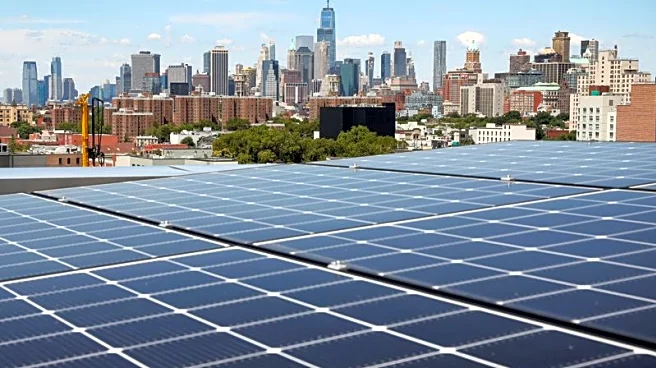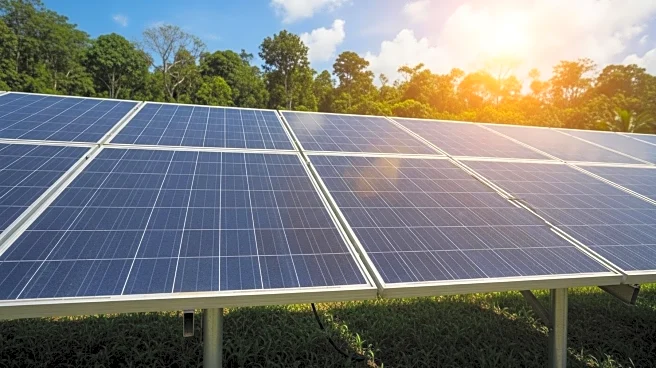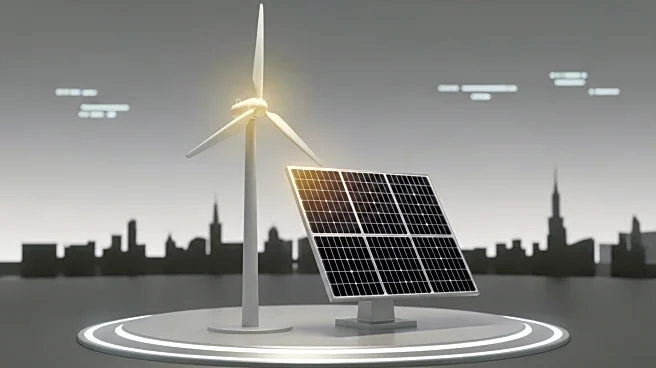What's Happening?
Monroe County in New York is experiencing significant growth in solar energy projects, with new solar farms continually coming online. Since 2000, the county has completed 2,394 solar projects, generating at least 236 megawatts of power, enough to supply approximately 42,480 homes. Recent projects include GreenSpark Solar, Kreher Solar Farm, and Hanoverian Solar Partners, each contributing several megawatts of capacity. The New York State Energy Research and Development Authority (NYSERDA) has provided financial incentives to support these developments, with the cost per watt of completed projects now at $1.86, a significant decrease from previous years.
Why It's Important?
The expansion of solar energy in Monroe County reflects broader trends in renewable energy adoption, contributing to New York's goals for sustainable energy and reduced carbon emissions. This growth supports local economic development by creating jobs and attracting investment. The decrease in cost per watt and NYSERDA incentives make solar energy more accessible, encouraging further adoption. As solar capacity increases, it enhances energy security and reduces reliance on fossil fuels, aligning with state and national environmental objectives.
What's Next?
Monroe County is set to continue its solar expansion, with 30.8 megawatts of capacity approved and represented by 154 projects in the pipeline. This ongoing development is likely to further decrease energy costs and increase the county's renewable energy footprint. Stakeholders, including local government and environmental groups, may push for additional incentives and support to maintain momentum in solar energy growth.
Beyond the Headlines
The growth of solar energy in Monroe County may influence other regions to adopt similar strategies, potentially leading to statewide or national shifts in energy policy. The environmental benefits, such as reduced greenhouse gas emissions, could contribute to broader climate change mitigation efforts. Additionally, the economic implications, including job creation and energy cost savings, may have long-term positive effects on local communities.











